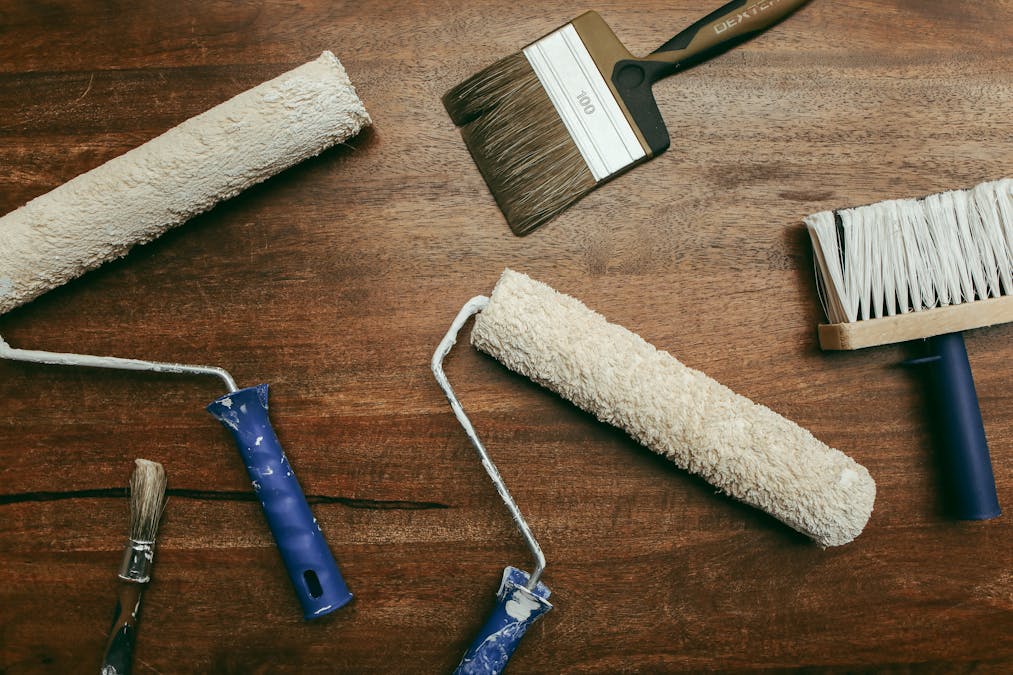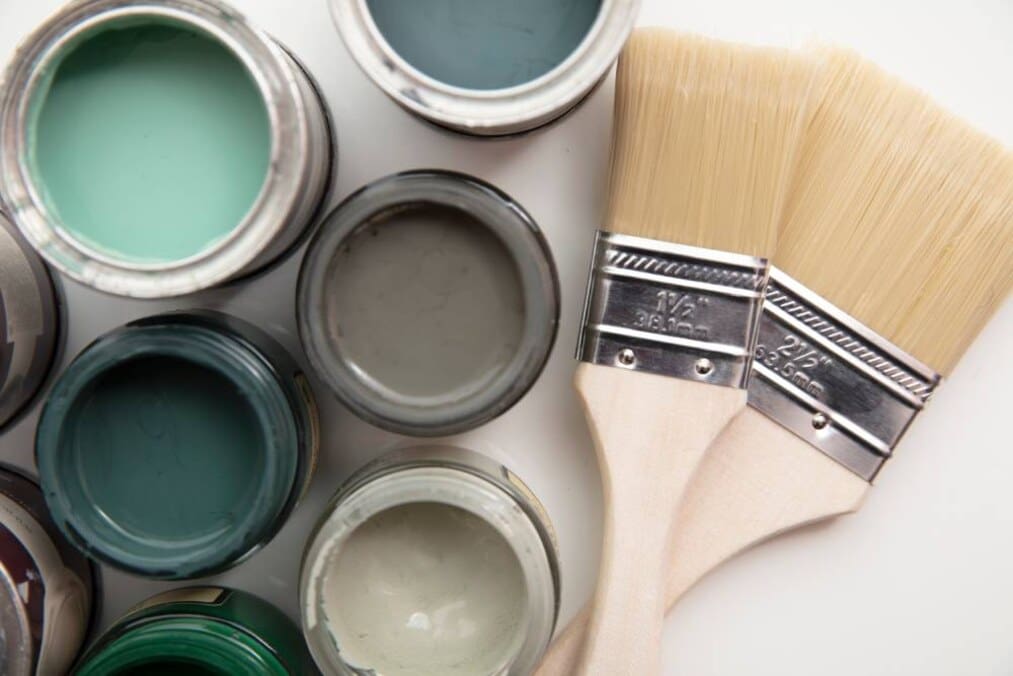
Prepping Your Home for Professional Painters: What Homeowners Need to Know
Hiring professional painters? A little prep on your end can go a long way.
Knowing how to prepare for professional painters can help ensure your project runs smoothly and finishes on time. While the painting team will handle the technical work, like prep, priming, and application, your role is to create a safe, accessible, and ready-to-go space.
The good news? You don’t need to lift a brush or drop cloth. Just a few simple steps can help prevent delays, protect your belongings, and set the stage for a clean, efficient paint job. In this blog, we’ll cover everything you need to know, from clearing rooms and managing pets to setting expectations with your crew before they arrive.
Here’s how to get your home ready for painting, without the stress.
Why Proper Prep Helps Everyone
Getting your home ready for a professional painting crew doesn’t just help the painters; it protects your space, keeps things on schedule, and ensures a smoother experience for everyone involved.
Keeps the Project on Track
- Reduces setup time, so the crew can dive right into the work.
- Helps avoid last-minute delays due to access issues or safety concerns.
- Streamlines the process, allowing painters to stay focused and efficient.
Protects Your Belongings
- Moving or covering furniture prevents accidental splatter or dust exposure.
- A clear, obstacle-free room reduces the chance of bumps, scratches, or spills.
- Painters can navigate ladders and tools safely without working around tight spaces.
Builds a Positive Working Relationship
- A ready-to-paint space signals respect for the crew’s time and tools.
- Good prep fosters clear communication and sets the tone for a cooperative process.
- When expectations are aligned, the result is a job done well, with fewer surprises.
How to Prepare for Professional Painters—Room by Room
Every room in your home has different needs when it comes to prep. Fortunately, most steps are quick, easy, and focused on giving your painters room to work safely and efficiently.
Living Rooms, Bedrooms & Common Spaces
- Remove wall art, mirrors, clocks, and hanging décor so the walls are completely accessible.
- Take down curtains or blinds, especially if the trim or window sills will be painted.
- Clear off bookshelves, side tables, and mantels, and move smaller furniture out of the room if possible.
- Cover larger furniture or move it to the centre of the room so painters can navigate with ladders and tools.
Kitchens and Bathrooms
- Empty countertops and remove hanging items, like hand towels or wall organisers.
- Clear under-sink cabinets if baseboards or trim in those areas will be painted.
- Unplug small appliances and secure cords to prevent trip hazards or interference with equipment.
Hallways, Stairwells & Entryways:
- Take down anything mounted on the walls, including hooks, floating shelves, or gallery-style photo arrangements.
- Ensure stairways and entry areas are clutter-free, so painters can move ladders and gear easily.
Pet and Family Considerations
When preparing your home for a professional painting project, don’t forget to plan around the needs of your family, including the four-legged members. A little foresight can go a long way toward keeping everyone safe and stress-free.
Plan for Safety and Comfort:
- Keep pets in a separate room or arrange for them to stay elsewhere during the project. Unfamiliar smells, sounds, and movement can make them anxious, and wet paint and paws don’t mix.
- Young children should be kept away from work zones to avoid accidents with equipment or fresh paint.
- Share your family’s routines (like naptimes, school pickups, or remote work needs) with your painters so they can plan around them if needed.
Ventilation and Access
- Let the crew know if windows in the work area are sealed or difficult to open—ventilation can help with paint fumes and drying time.
- Make sure painters have easy access to outlets, water sources, and restrooms if required.
- If certain doors or gates need to remain closed (for pets or safety), point them out at the start of the job.
These simple steps make for a smoother experience and ensure your home and family stay protected during the process.
Communication: The Most Overlooked Step in Prep
One of the best ways to ensure a successful painting experience isn’t physical prep—it’s clear communication. Talking through expectations with your painting crew before work begins helps eliminate confusion and builds trust.
Set Expectations Before Work Begins
- Review the project timeline with your painter. Confirm the expected start and end dates and discuss daily access hours.
- Clarify what you’re responsible for (like moving furniture or covering floors) and what the painting crew will handle.
- Let the team know about any special instructions or off-limits areas, such as locked rooms or valuable items.
Walk Through the Space Together
- Before painting starts, walk the home with the crew lead. This gives everyone a chance to review the scope and raise questions.
- Point out any areas of concern, such as cracks, water stains, or damage that may need patching.
- Confirm paint colors, finishes, and specific areas to be painted, so there are no surprises along the way.
Post-Project Tips to Keep Things Looking Great
Once the painters wrap up and your space is freshly transformed, a few simple aftercare steps can help maintain that professional finish for years to come.
Aftercare Basics
- Avoid touching or cleaning freshly painted surfaces until the paint is fully cured (your crew will let you know how long that takes—usually 24–48 hours).
- If weather permits, open windows to speed up drying and air out any residual odour.
- Ask your painters if they’ll leave behind touch-up kits or leftover paint, and label them for future reference.
Maintain the Finish
- Use gentle, non-abrasive cleaners when wiping down painted walls, especially in high-touch areas like hallways or kitchens.
- Keep an eye on corners, baseboards, and door frames where scuffs are more common.
- Consider setting a reminder for light maintenance or touch-ups every couple of years, especially in high-traffic zones.
Taking good care of your freshly painted space helps extend its life and keeps it looking just as good as the day the painters packed up.
A Little Prep, A Lot of Payoff
As you’ve learned, knowing how to prepare for professional painters isn’t about doing the hard work; it’s about setting the stage for a smooth, efficient, and successful project. With a few simple steps, you can protect your home, support the painting crew, and get the most out of your investment.
Whether you’re refreshing one room or transforming your entire home, a little prep on your part leads to better results all around. Planning a refresh? Contact our team to schedule your painting project, and let us handle the rest.






